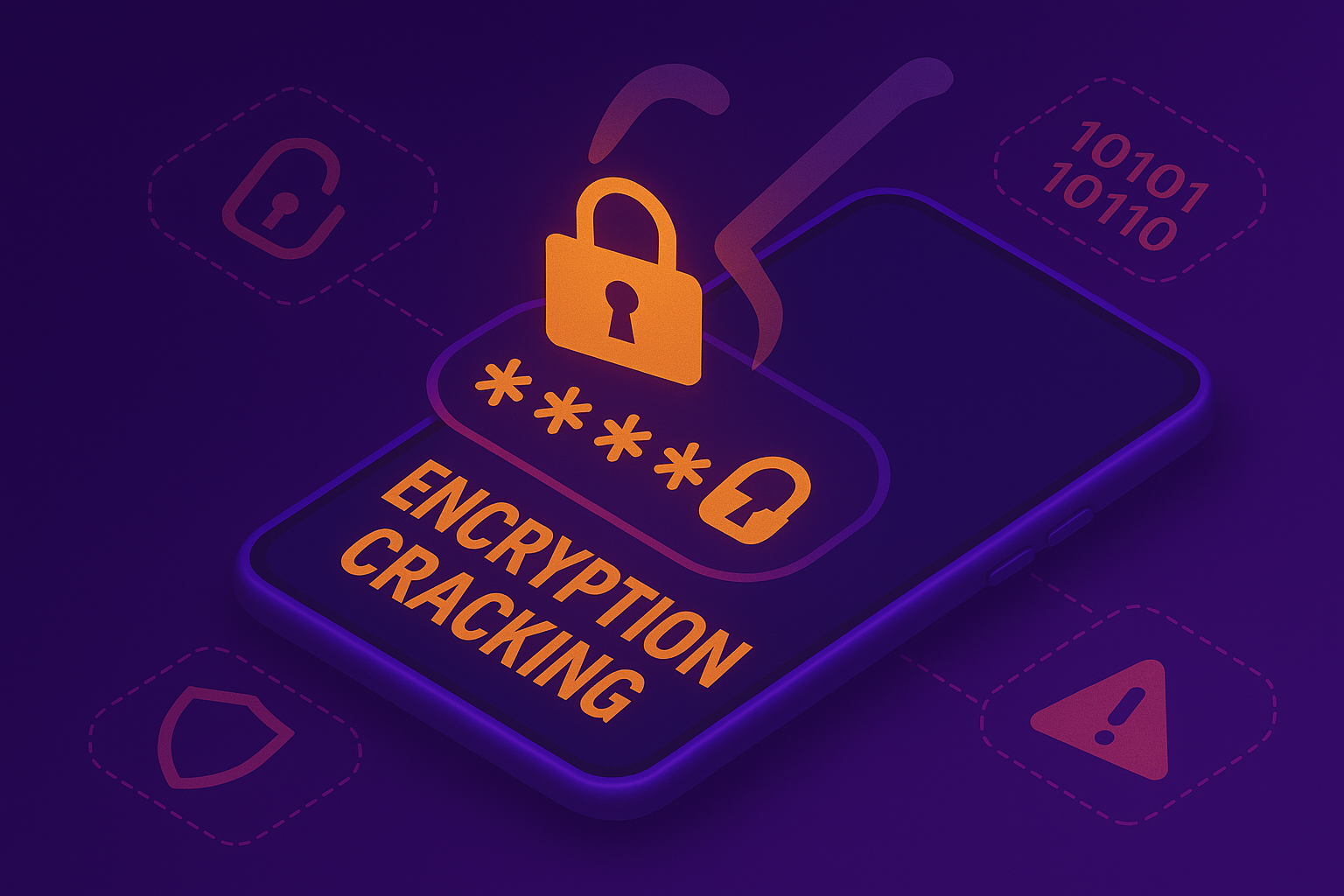
Encryption Cracking
Encryption cracking is a significant concern in cybersecurity, referring to the process of breaching or bypassing encryption mechanisms that protect sensitive data. In the context of network security, encryption cracking involves using specialized software and a variety of attack techniques-such as injecting or decrypting traffic and dictionary-based attacks-to break through the encryption protocols (like WEP or WPA) that safeguard information transmitted across networks
Encryption is a cybersecurity technique that transforms readable data, known as plaintext, into an unreadable format called ciphertext using mathematical algorithms and encryption keys.
Encryption cracking refers to the methods and techniques used to break or bypass encryption protections without authorization. Attackers attempt to recover the original plaintext or encryption keys by exploiting weaknesses in the encryption algorithm, poor key management, or by using brute force and other cryptanalytic methods. Encryption cracking poses a significant cybersecurity threat because it can expose sensitive data, undermine privacy, and lead to data breaches. Cybercriminals, hackers, and sometimes government agencies use encryption cracking to gain unauthorized access to protected information.
Common Methods of Encryption Cracking

Brute Force Attacks
This method involves systematically trying every possible key or password combination until the correct one is found. It is straightforward but requires significant computational power and time, especially against strong encryption keys
Cryptanalysis
Exploiting mathematical weaknesses or vulnerabilities in the encryption algorithm itself to reduce the effort needed to break the encryption. This can include techniques like differential or linear cryptanalysis targeting outdated or weak algorithms
Dictionary Attacks
Using precompiled lists of common passwords or phrases to guess the encryption key or password. This works well when users choose weak or predictable passwords
Hybrid Attacks
A combination of dictionary and brute force attacks, where attackers try variations of known passwords by adding numbers, letters, or symbols to common base passwords
Rainbow Table Attacks
Using precomputed tables of hash values to reverse hashed passwords quickly. This is effective when passwords are hashed without additional protections like salting
Side-Channel Attacks
Targeting the physical implementation of encryption by analyzing information leaked through power consumption, timing, electromagnetic emissions, or fault injections to extract keys
Network Encryption Cracking
Specifically targeting weak wireless encryption protocols such as WEP or older versions of WPA to intercept and decrypt network traffic
Key Actors Involved in Encryption Cracking
Cybercriminals
They are the primary users of encryption cracking techniques, aiming to steal sensitive data such as financial information, personal identities, and login credentials. Their goals often include financial gain, identity theft, fraud, or launching further cyberattacks.
Hackers and Malicious Actors
Some hackers crack encryption to demonstrate their skills, cause disruption, or spread malware. They may use password cracking tools and automated bots to gain unauthorized access to systems and data.
Government and Intelligence Agencies
Law enforcement and intelligence agencies may use encryption cracking or alternative methods like hacking endpoints to access encrypted communications for national security, counterterrorism, or criminal investigations.
Ethical Hackers and Security Professionals
Also known as white-hat hackers, these users employ encryption cracking techniques in controlled environments to test and improve the security of systems. Their work helps organizations identify vulnerabilities before malicious actors can exploit them.
Prevention Strategies Against Encryption Cracking
Use Strong, Modern Encryption Standards
Implement robust algorithms like AES-256 or RSA-2048 to secure data at rest and in transit. Avoid outdated or vulnerable encryption methods that are easier to crack.
Encrypt All Sensitive Data and Devices
Ensure encryption covers external devices (laptops, USB drives) and all sensitive data to protect against data theft if devices are lost or stolen.
Implement Robust Key Management
Securely generate, store, and manage encryption keys using hardware security modules (HSMs) or trusted platforms. Use dual storage (digital and physical backups) and avoid key reuse. Regularly rotate and revoke keys to minimize exposure if compromised.
Control and Monitor Key Access
Restrict encryption key access strictly to authorized personnel. Maintain an updated inventory of who has access and promptly revoke or re-encrypt data when employees leave or change roles.
Regularly Update and Patch Encryption Protocols
Continuously monitor encryption technologies and update algorithms and keys to defend against emerging vulnerabilities and brute-force attacks. Stay aligned with the latest standards.
Integrate Encryption into a Multi-Layered Security Strategy
Combine encryption with other cybersecurity measures such as firewalls, access controls, intrusion detection, and data loss prevention (DLP) solutions for comprehensive protection.
Conduct Regular Audits and Penetration Testing
Perform frequent security assessments to identify weaknesses in encryption implementation, key management, and access controls. Simulate attacks to evaluate resilience and compliance.
Educate and Train Staff
Provide ongoing training on encryption best practices, secure data handling, and key management to reduce human errors that can lead to vulnerabilities.